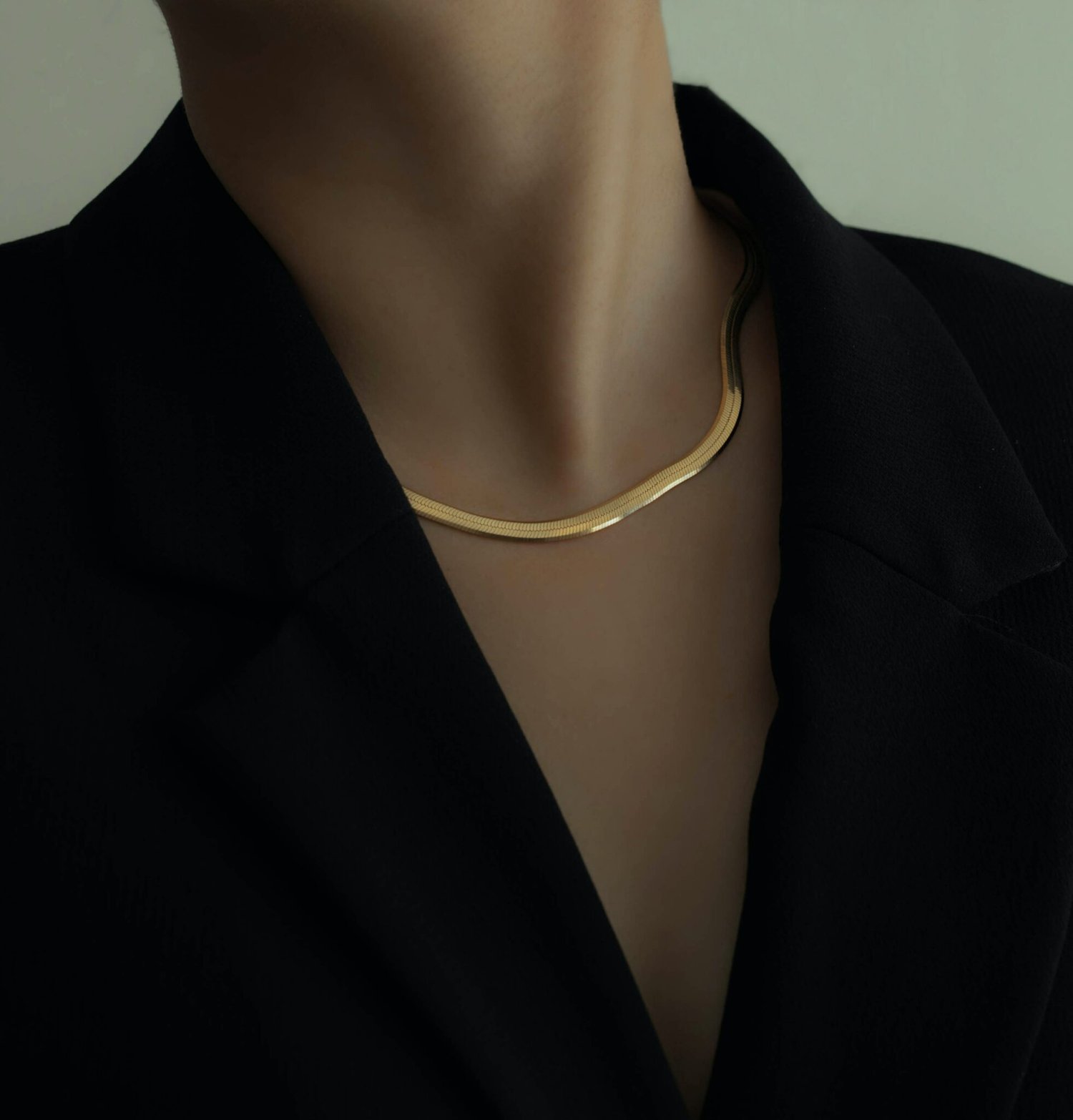Knowing how to photograph jewelry is part of product photography and cannot be missing from your photographic resources. With relatively few resources and little space, you can get very professional photos, so it can be an interesting way to get into product photography.
To achieve good results in jewelry photography, you must take into account, above all, the lighting and composition of your photos. If you want to learn how to take good jewelry photographs, don't miss this article ? .
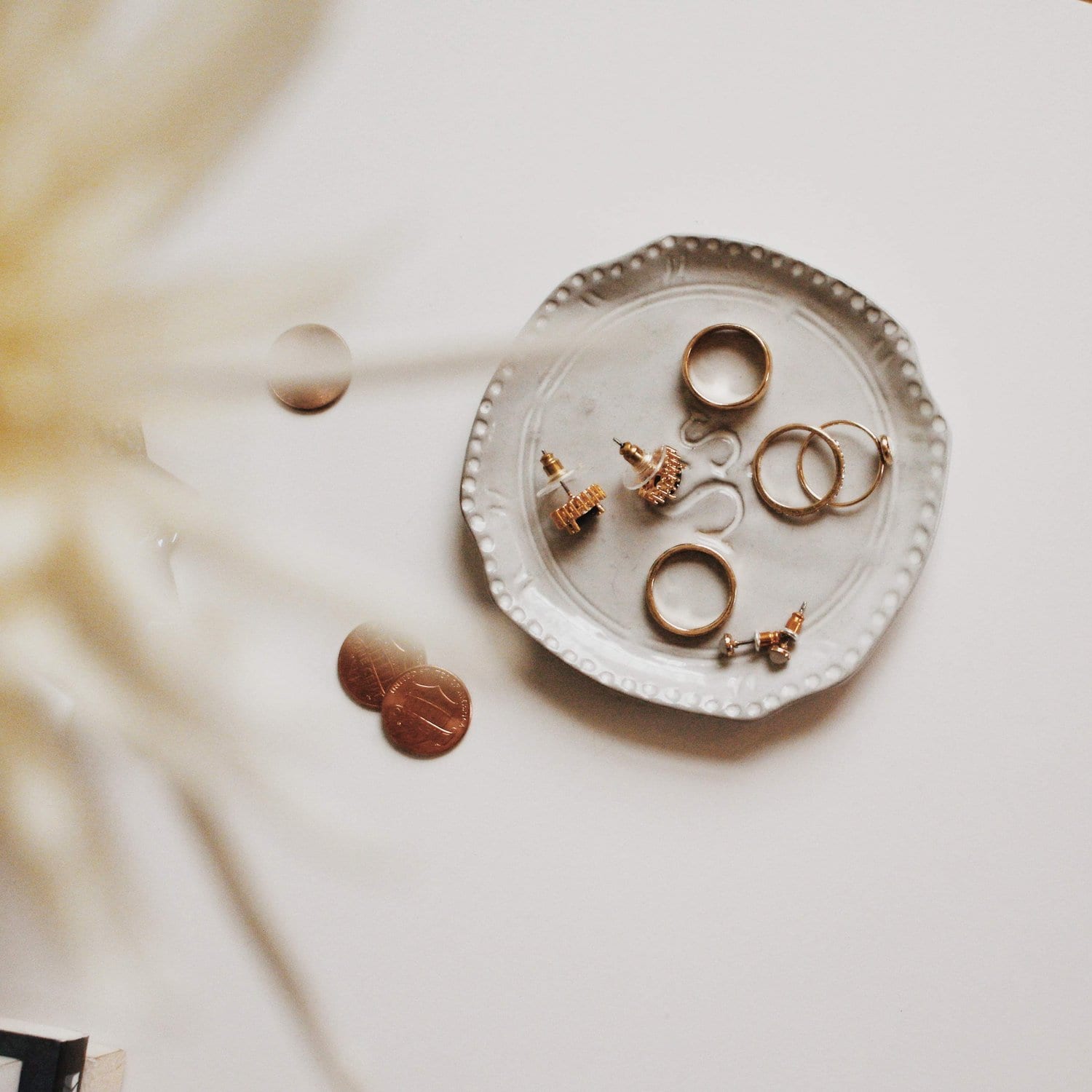
JEWELRY PHOTOGRAPHY EQUIPMENT
To photograph jewelry you do not need a large team or too much space, which is why it is an interesting option if you want to get started in product photography for social networks , blogs or websites.
A CAMERA
Obviously we need a camera. If it can be with manual settings and interchangeable lenses, so much the better. But, as you will see later, you can manage to photograph jewelry with good results even with your mobile phone.
A BRIGHT TARGET
For this type of photography, a macro lens can work very well , especially if you want to photograph jewelry at a very close distance. A 105mm macro or similar can be a good combination to capture the jewel well without having to be on top of it.
However, if you have a focal length around 50mm and very bright, such as The King of Lenses or the Prince , you can also take advantage of it, perhaps you will not get as much detail, but you can try more open shots.
A TRIPOD
A tripod is essential to achieve good results, since it will allow you to work indoors if necessary, keeping ISOs low without worrying about shutter speed.
A LIGHT BOX
They are a must in product photography that you will take advantage of to photograph jewelry and other products. You can make your own light box or buy one. There are different features and prices, but in general they are quite affordable.
ADVANTAGES OF THE LIGHT BOX
- It emits a soft and uniform light, ideal for highlighting all parts of the jewel equally and avoiding shadows.
- They are cheap and easy to use
- They provide a constant color temperature
- They take up little space
MONEY
The most common are the white background and the black background, but you can also use wood, fabrics, textured backgrounds, etc.
White backgrounds are widely used, since they allow us not only to have a neutral environment that fully highlights the jewel, but it is also the easiest to "cut" to make montages with the image.
The black background is also used a lot because it is elegant and dramatic.
EXTERNAL FLASH
An external flash that you can control the power and orientation of can be very useful. To photograph jewelry it is highly recommended that you use a flash diffuser.
COTTON GLOVES
Yes, after having neatly cleaned your jewellery, it is best to handle them with cotton gloves to avoid leaving traces or dirt again and leaving them visible, spoiling your photos.
DIFFUSER
If you do not use a light box, you will need a diffuser to soften and homogenize the light and thus avoid the dreaded reflections that direct light generates on the jewels.
STEPS TO PHOTOGRAPH JEWELRY
To photograph jewelry I recommend you follow the following steps :
- Define the photographic project
- Jewelry in perfect condition
- Jewelry photography lighting
- A suitable background
- Composition in jewelry photography
- The reflections
- photographing silver jewelry
- the human element
- best settings
- Edition
- Social networks
1. DEFINE THE PHOTOGRAPHIC PROJECT
This is surely the most important step of the whole process. Before launching ourselves to take our jewelry photographs, it is very important to define well what is the raison d'être of our images, what we expect (or expect from them), or what is the purpose of them.
What is the final destination of the photograph?
To know what type of final image we need, the first thing is to define its purpose, a product photo for Instagram is not the same as for a jewelry web catalog. I give you a couple of examples.


The previous photographs correspond to the website of the very famous Rabat houseof jewelry. Although they have photographs with models, the catalog shows the images in isolation to fully appreciate the volume, color, etc., of the jewel.
When the jewel is intended to be sold as part of a lifestyle, the approach is very different.
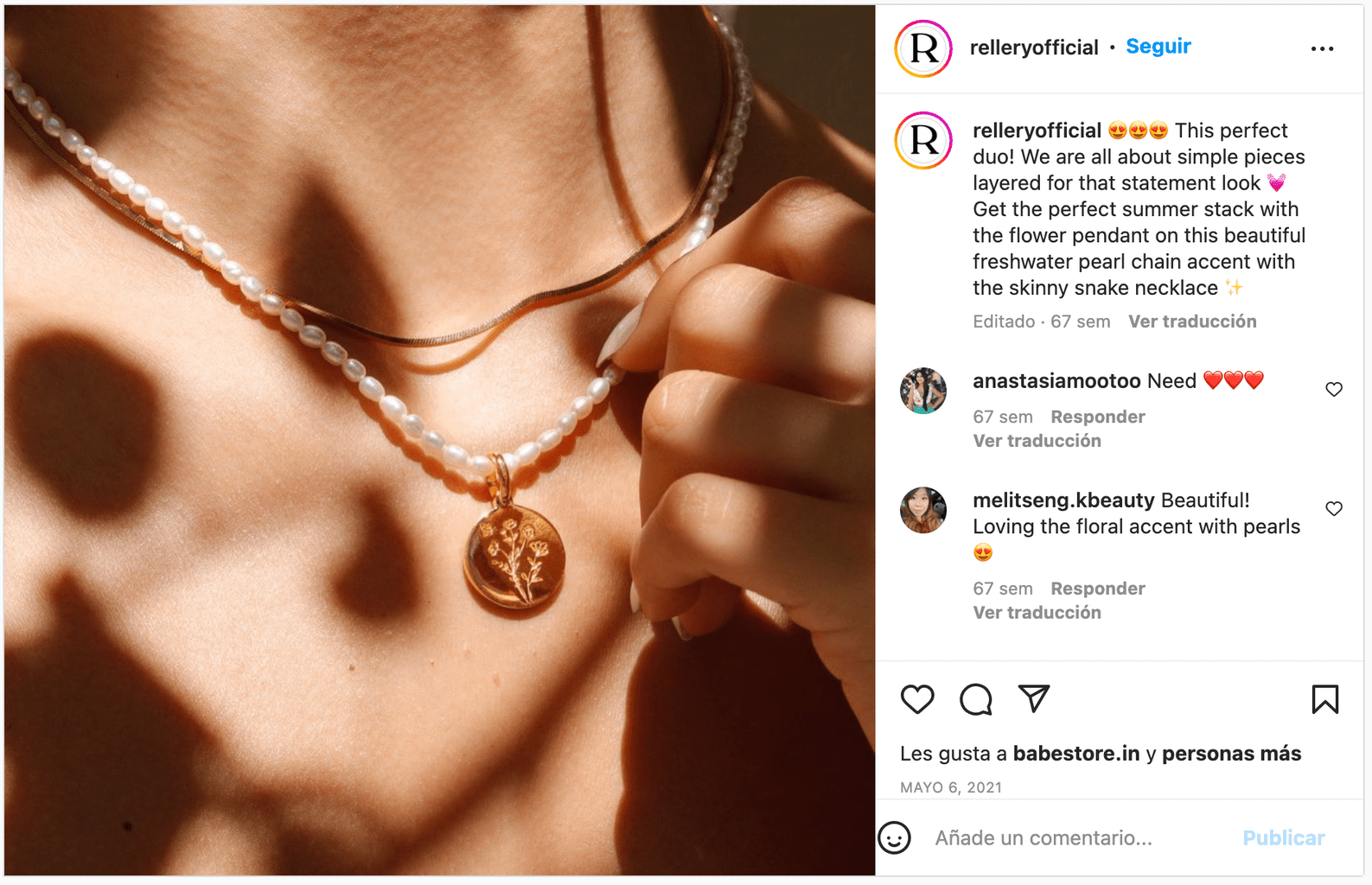
HereYou have some jewelry beads for inspiration on Instagram .
What do we seek to convey with them? What idea does the brand have?
A little in line with the previous point, it is very important that we define well what the objective of the brand is to avoid surprises or work in vain.
Not all jewels are the same nor are they aimed at the same audience, nor do all brands want to convey the same thing.
It is very important, therefore, to see what idea we seek to convey, what audience the photograph will target, etc.
Is it a single photograph or is it part of a series?
Finally, in terms of forecasting, it is important to define whether we will take a series of photographs (for a collection, for example) or an isolated photograph.
When we make series, it is important to think carefully about the common thread between all the photographs, which goes from maintaining a style, editing, lighting or the same white balance.
2. JEWELRY IN PERFECT CONDITION
It seems obvious, but sometimes we focus so much on lighting and settings that we forget about the most important thing: the perfection of the object.
That with jewelry means removing fingerprints, small specks of dust, etc., and giving it as much shine as possible.
A microfiber cloth is ideal for most cases.
If it has any imperfection (scratch, etc.) the first thing is to detect it ? and then you can compose it so that it can't be seen, or correct it in the edition.
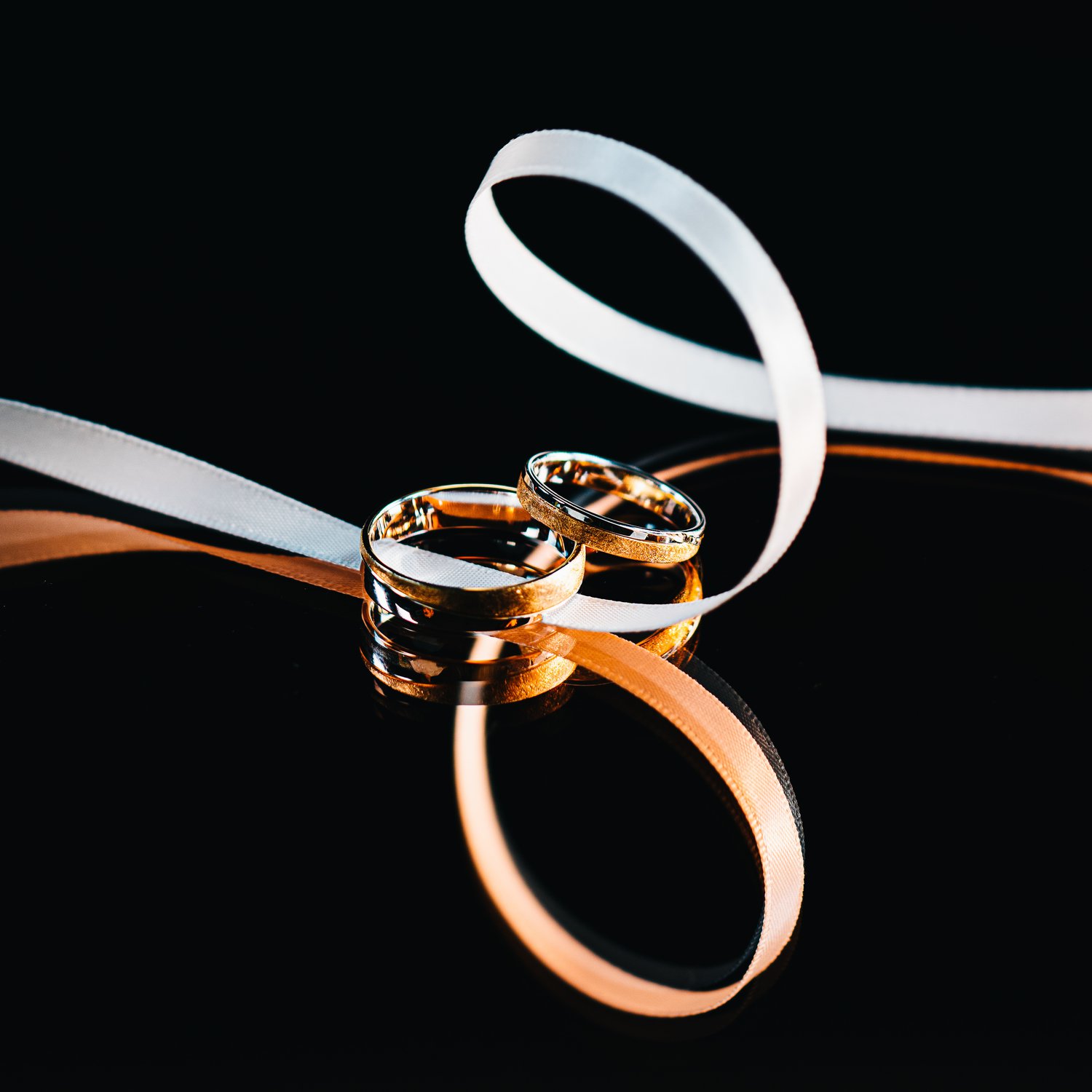
3. LIGHTING FOR PHOTOGRAPHING JEWELRY
Lighting in jewelry photography is basic and must be taken care of, because jewelry tends to reflect light and generate glare and shadows.
The challenge, therefore, is mainly there, especially for "catalog" or "sample" type photographs where the objective is to show the jewel realistically, without distortions, shadows or reflections.
As a general rule, for catalog-type photographs, you can use a light box, which will provide you with a diffused and homogeneous light, which will help you eliminate glare and shadows easily.
Now, not all jewelry photography is going to go to a catalogue, as I have mentioned before, many of these jewelry photographs are aimed at transmitting sensations and lifestyles.
In this type of photography you can be more creative with light and compositions. You can play with the shadows, and harsher lights, as I show you in the following image:
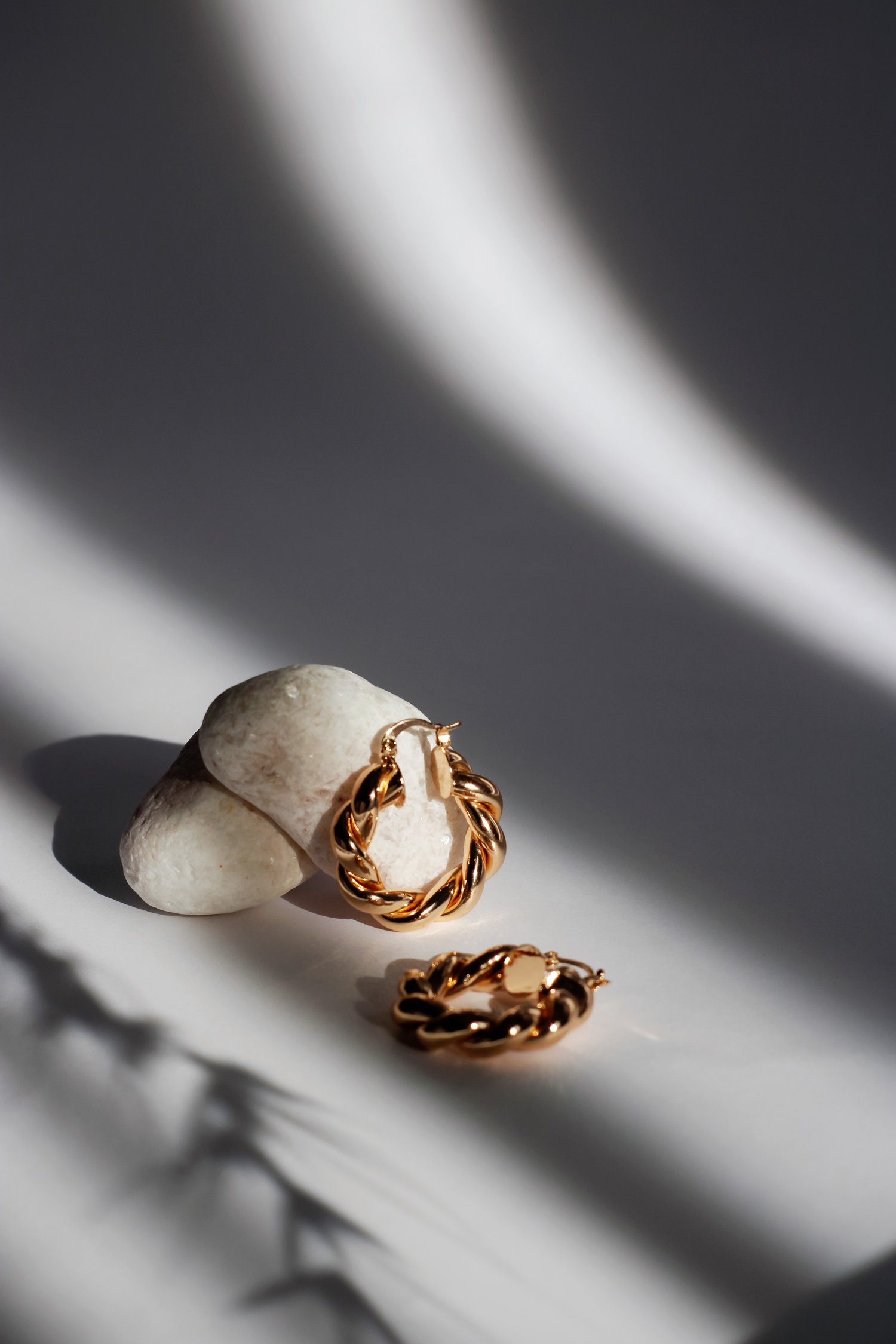
4. A PROPER BACKGROUND
A white background is basic for any type of product photography, but in jewelry photography it will be essential, since many of the requests you will have will be with this type of background.
When you work with white backgrounds make sure that it is really white. Learn how to get it in the link ? . And the same for black backgrounds , it is not as easy as it seems, since the light meters integrated in the camera fail slightly when they have to measure such extreme tones as white or black.
To check the background, keep an eye on the histogram, which is the only one that will ensure that the photo you are taking has a pure black or white background. The view, the screen, etc., can deceive you and, although you can finish fixing it in the processing, the better the image that comes out of the camera, the better final quality you will obtain.
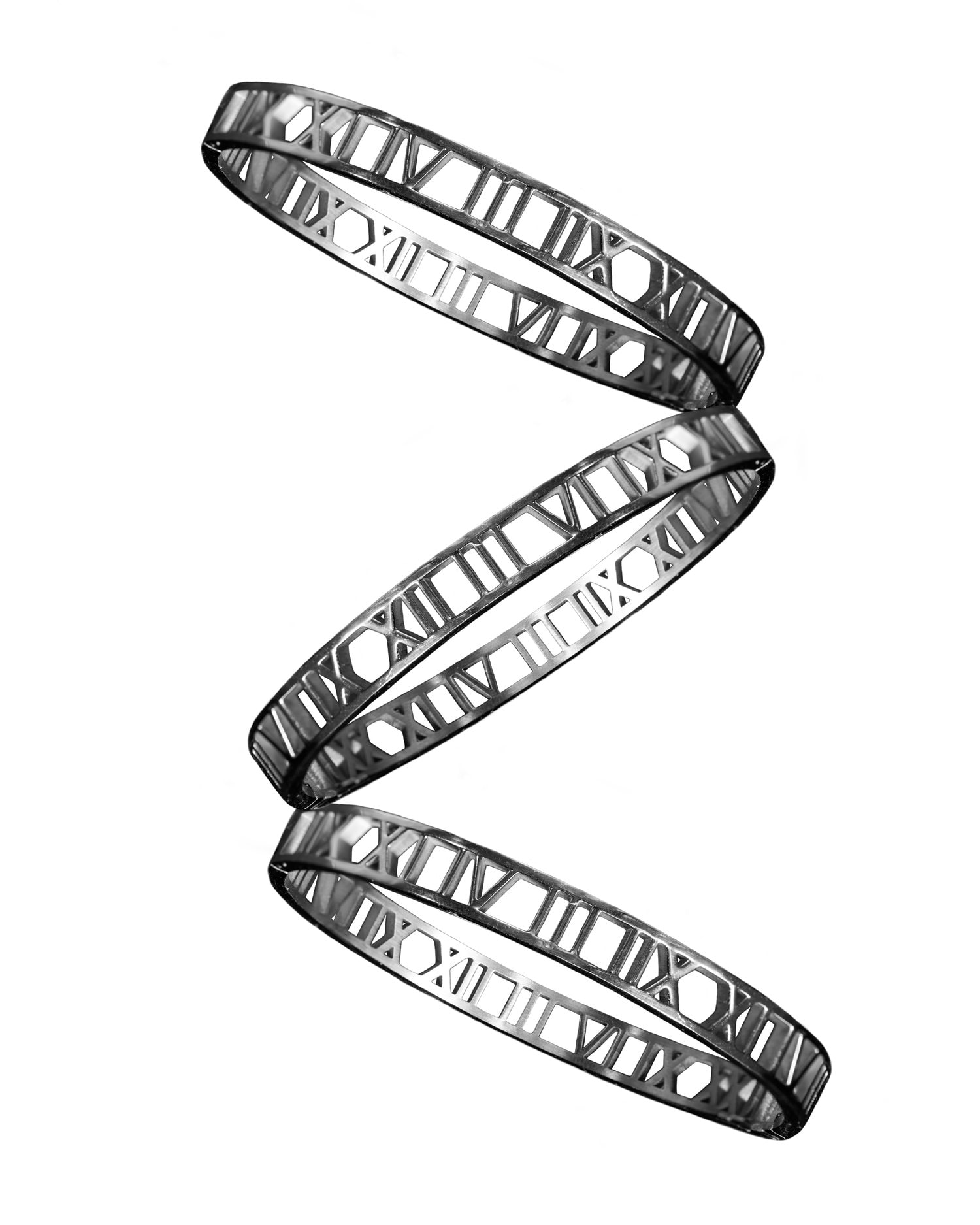
Do not forget to experiment with another type of background such as wood, slates, etc., which provide other sensations to the product.
5. COMPOSITION IN JEWELRY PHOTOGRAPHY
Another very important aspect to take into account in jewelry photography is the composition. Not only the place that the jewel occupies within the frame, but also the way in which we show it.
As always, the final objective of the image intervenes in the composition. For a sample or catalog image, the centered image is usually shown, but for other types of images you can be more creative, always trying to place the jewel in a strong point of the image.
The most common shooting angle in jewelry photography is 45º. This angle allows the jewel to be shown slightly from the front and at the same time to give it depth.
However, it will depend on the jewel and the intention. You can also use totally zenithal points of view (for example, for necklaces) or frontal.
For more Life Style or lifestyle photographs, you can give free rein to your imagination, combine jewelry with elements that convey the message that interests you, etc. Always keep in mind not to lose sight of the fact that the protagonist of the image is the jewel.
I leave you with our complete guide on composition where you will find many tips and tricks on this topic.
6. REFLEXES
Reflections are a resource used in jewelry, as they allow the object to be seen from different angles, play with symmetry and add volume.
To achieve this type of reflection you can use a methacrylate base on a dark base.
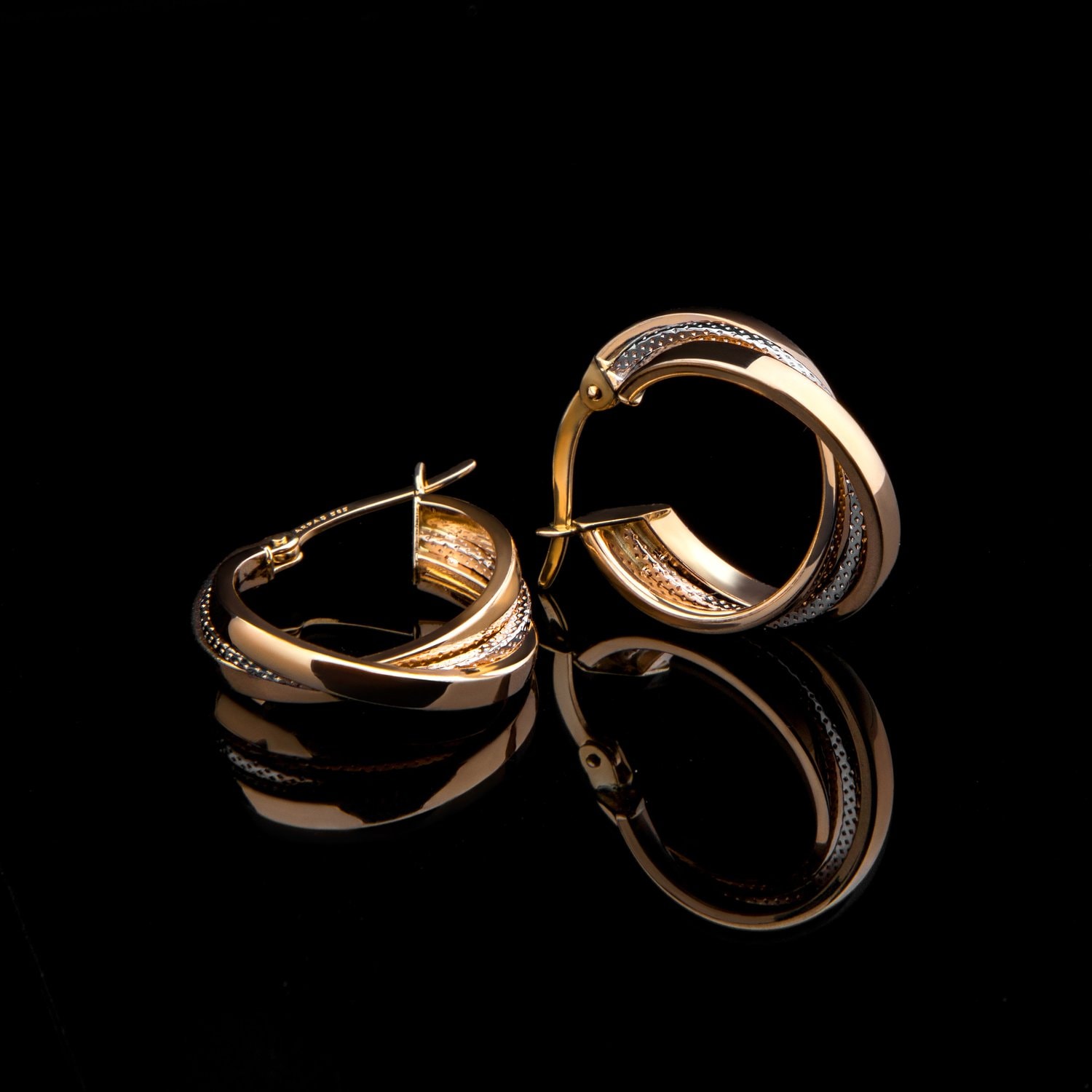
7. PHOTOGRAPH SILVER JEWELRY
To photograph silver jewelry , you must take into account that they reflect a lot of light, so using a light box can be a good ally when photographing this type of material.
It's also easy to leave fingerprints on surfaces, so make sure you've cleaned the material well before photographing it.
You should also keep in mind that they should stand out from the background. A dark background will probably make them stand out more, unless you need to make it white for the reasons we've already discussed above (so you can easily crop the image).
8. THE HUMAN ELEMENT
It's no secret that we like to see the product that we are potentially going to wear on someone else's body. It allows us to better see the size, tone and fall or length, depending on the jewel.
That is why the human element in jewelry photography is essential. Some hands, a neck or some ears can be the best showcase for a jewel.
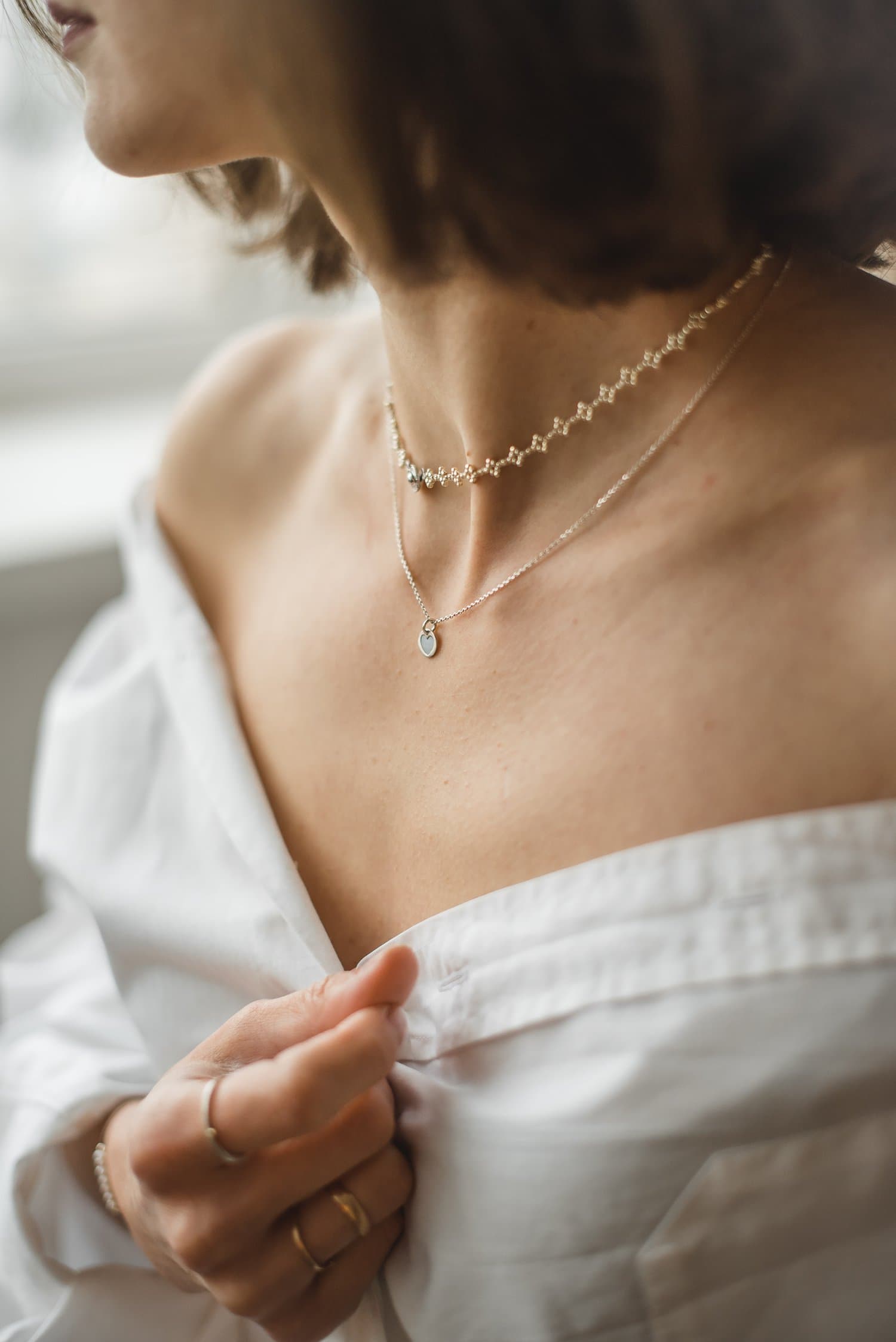
9. SETTINGS FOR SHOOTING JEWELRY
To photograph jewelry we must always prioritize sharpness and focus.
- Use a low ISO.
- Turn off the stabilizer on your camera or lens if you're using a tripod.
- Use a medium aperture, find the sweet spot of your lens.
- Use the RAW format, you will avoid problems with the white balance and you will have better image quality.
- It measures the exposure in a timely manner.
- Check focus at 100% magnification.
- Activate the histogram to control the highlights and shadows.
10. EDITION
The most important thing about editing in jewelry photography is that it must reflect the piece realistically. The person who buys that jewel must recognize it when they have it in their hands and not be a tarnished version of what you have offered them in image.
Finding the balance between a realistic and attractive image is the most difficult part, so you always have to start with slight adjustments and try not to fall into over-processed images.
FOCUS STACKING
An essential technique to get the entire jewel in focus when we want to photograph jewels at a very short distance.
It involves taking several shots of the jewel, varying only the focus, in order to "add" these images (stack them) with an editing program, thus achieving an image focused on all its parts.
CONTRAST
When you apply contrast, you apply contrast to the entire image equally. Try first with the "clarity" or similar setting (depending on the editor) which adds contrast to the midtones. Use it carefully, always weighing the fidelity of the image with reality.
THE COLOR
Color is particularly tricky because we tend to saturate colors to get more "popular" images, but it's easy to get excited and end up with unrealistic images.
I recommend that you make slight adjustments and keep the jewel if you can to compare it live. Some intensity, rather than saturation, is a good way to start.
Vibrance is like clarity in contrast, it turns up the saturation of desaturated tones, but preserves (to a certain extent) the more saturated tones.
SCRATCHES AND DUST
Try to correct these small imperfections by enlarging the image to 100% with a correction or cloning brush, and make the adjustments little by little.
11. SOCIAL NETWORKS
If the final destination of your jewelry photos is Instagram or other social networks , the main thing is to know the different formats to publish optimally. In the links we tell you everything that interests you.
Get inspired by accounts that you like or that have followers and interaction, get ideas, find your personal style.
I leave you again as an example thesethat I proposed to you previously, but there are many.
HOW TO PHOTOGRAPH JEWELRY WITH YOUR MOBILE
If you don't have a photographic equipment to use, don't worry, you can get very decent results with your mobile, as long as the final goal is not a big enlargement ? .
In this interesting video you will see settings and ideas for photographing jewelry with your cell phone with the best possible result:
Learning how to photograph jewelry is a great way to expand your range of knowledge and photographic resources, since doing so does not require a large initial investment or a specific space, so practicing this type of photography is within everyone's reach.
I hope you liked this article, that you have found and resolved doubts in it and above all, that it has made you want to practice a new type of product photography if you had not yet dared to tinker with it.

